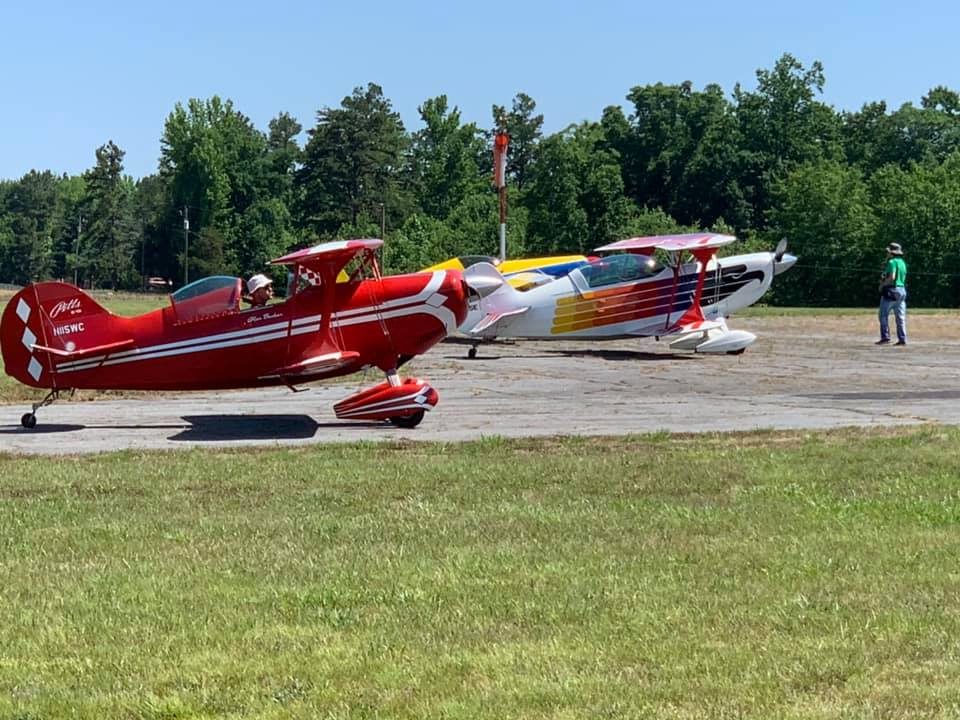Lunenburg County Airport solar project moves forward
Published 12:25 pm Thursday, July 17, 2025
|
Getting your Trinity Audio player ready...
|
The proposal to put up a solar project at the Lunenburg County Airport took a step forward this month. The Board of Supervisors voted to allow bids on the project, in order to see if there’s interest and if so, what that would look like.
This isn’t an approval on the project itself. That would be much further down the road and would require votes from the county and both towns. Instead, this is asking developers to pitch what they would offer and how they would handle a relatively small solar project, between 20 to 25 acres, on the southern side of the airport property. Sitting roughly three miles west of Kenbridge, the property is jointly owned, so any decision can’t be made by county supervisors alone. In 1966, when the Lunenburg County Airport was developed, ownership and expenses were split three ways. Lunenburg County owns 50%, while the towns of Kenbridge and Victoria each own 25%, respectively. That means any economic project or even moving forward on a potential project has to be agreed to by a majority of owners.
And there is one more issue here to consider. As Lunenburg County Administrator Tracy Gee pointed out during the county board’s Thursday, July 10 meeting, Lunenburg does not have an active solar ordinance yet. The county staff and legal department have been going over the proposed amendments to the ordinance for nearly two months now, making changes before bringing it back to supervisors for a vote. The lack of an active solar ordinance makes it hard to get a full proposal, as developers don’t know yet what they would be required to do. And so, the county supervisors can vote on moving forward with the concept and ask for pitches, but no full-blown request for proposals are going out just yet.
Trending
“We would hold off on any kind of rfp (request for proposals) for those services until such time as the solar ordinance (is done),” Gee told the board.
Concern over glare
The main concern raised by supervisors has been about glare. With sunlight reflecting off those solar panels, is that dangerous for pilots and planes?
Earlier this year, Lunenburg County Airport Manager Larry Way told The Dispatch that the airport averages 30 flights per month, based on the data. However, in the same breath, Way claimed the data might not be completely accurate.
“Many flights do not stop at the FBO (Fixed Base Operator) to sign the guest register but utilize the airport to hone their skills both for landings and approaches,” Way said in that earlier interview. “This number most likely does not reflect the total number of aircraft using the airport.”
So what impact would a solar farm have on 30 or more than 30 aircraft as they take off and land? The Dispatch reached out to a number of sources to get an answer on this.
First off, we went to the FAA (Federal Aviation Administration). Officials there directed us to a document on their website, highlighting a May 2021 policy. That policy requires airports to measure the visual impact of the specific project. Does it create glare? If so, how much?
“In certain situations, the glass surfaces of the solar energy systems can reflect sunlight and produce glint (a momentary flash of bright light) and glare (a continuous source of bright light),” the policy states. “Initially, FAA believed that solar energy systems could introduce a novel glint and glare effect to pilots on final approach. FAA has subsequently concluded that in most cases, the glint and glare from solar energy systems to pilots on final approach is similar to glint and glare pilots routinely experience from water bodies, glass-façade buildings, parking lots, and similar features.”
So can solar create glare? Yes, but the amount varies based on the solar farm’s location and the size of the project. To get approved, a solar project here would have to prove to the FAA it has the glare under control.
Ways to combat glare
Currently, an estimated 20% of airports in the U.S. have some type of solar project attached. That includes Dulles International Airport, which has a deal with Dominion for a project set to be operational in 2026. The project will cover 835 acres and include roughly 200,000 solar panels.
The FAA says there are several ways to address the glare problem at an airport. First, and simplest, you can work with a developer that uses anti-reflective coating and texturing on the solar panels.
The second option also addresses a second concern of Lunenburg supervisors. They asked if solar farms could affect the airport’s radar? The FAA says that can be avoided by maintaining a 250 to 500-foot setback from any takeoff or landing areas.
Has this worked before? Several much bigger airports have concepts like this, but to compare apples to apples, The Dispatch looked for smaller regional airports. What we found as an example was Humboldt County, California. In an area similar to Lunenburg in that it is rural, the county used solar to build its own microgrid. In their case, it’s grown to the point it helps power the airport and they routinely sell energy back to the grid. But again, everything depends on the proposal. How much of that 25 acres would the grid use? Is a developer willing to put anti-reflective coating on panels?
What’s next for the Lunenburg County Airport?
As Gee told the board on Thursday, this is just the first step. Now they reach out and see if developers are interested and what they would offer. In the meantime, work also continues on the county’s solar ordinance.



